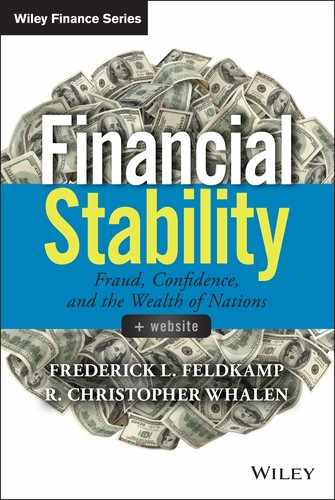CHAPTER 21
Capital Needs
The world faces dwindling resources of everything from oxygen to the fuel that consumes it. As one lists the squandering follies of mankind’s history, it becomes increasingly difficult to see a future for humanity as we know it. Efficiency, whether measured by increased productivity or elimination of adverse environmental impact, requires capital investment.
What amount of investment will it take to reduce worldwide temperatures that are already stressing the limits of earth’s capacity to sustain life as we know it? That is impossible to calculate, of course, but it is equally impossible to imagine a world without the capacity to sustain life. Like the central bankers who solved the financial crisis of 2007–2009 by announcing that they would do whatever it takes to overcome the crisis, that is what we must do to solve world preservation.
We may not like particular aspects of the process to overcome problems, but we must overcome the problems. Therefore, readers can substitute whatever number they want for the estimates provided here.
Let’s postulate that solving the problems that threaten humanity with extinction will require $4 quadrillion of capital investment over the next 40 years or so. If worldwide capital investment was $200 trillion in 2006, the crisis and private-sector debt contraction since then (offset by a recovery of equities and expansion of public-sector debt of central banks) suggests we have made little progress in capital investment over the past seven years.
It has been reported that total world wealth recently reached $240 trillion, of which $110 trillion is represented by the United States. To achieve a nearly twentyfold increase in capital investment over the next 40 years will only require a 7.75 percent per annum increase in debt and equity values. If debt is stable, however, that requires growth of more than 15 percent per annum in equities (and vice versa if there is no growth in equity). If there are any future crises, the greater the crisis, the higher the necessary recovery rate thereafter. For example, a 50 percent decline in equity value necessitates a 100 percent recovery just to regain the precrisis level.
As the Dutch learned when they began the very long process of turning the bottom of the ocean into farms by building dikes, capital growth requires stability and stability requires confidence. The Dutch also created one of the world’s first speculative blunders (with the tulips they acquired to beautify the fields they created). The Dutch recovered from that crisis, and we can achieve the growth needed to save the world, but only if we solve the problem of financial stability.
